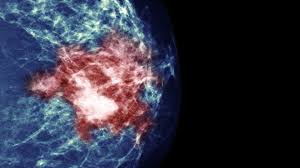Breast MRI Insufficient to Avoid Surgical Axillary Staging in Patients Receiving Neoadjuvant Endocrine Therapy
 A study assessing the preoperative axillary nodal disease burden using breast MRI in locally advanced breast cancer patients receiving neoadjuvant endocrine therapy (NET) found that it is insufficient to preclude surgical axillary staging. However, the authors reported that diffusion-weighted imaging (DWI) was the only axillary node characteristic that had a significant association with pathological node status (χ2(4)=8.118; P=.072).
A study assessing the preoperative axillary nodal disease burden using breast MRI in locally advanced breast cancer patients receiving neoadjuvant endocrine therapy (NET) found that it is insufficient to preclude surgical axillary staging. However, the authors reported that diffusion-weighted imaging (DWI) was the only axillary node characteristic that had a significant association with pathological node status (χ2(4)=8.118; P=.072).
The BMC Cancer published study included 33 clinically node-positive locally advanced breast cancer patients who underwent NET and surgery. Two radiologists reviewed the axillary nodes at three separate time points with MRI examinations before the first treatment regimen, following at least 2 months after the first cycle and prior to crossing-over, and after the final administration of therapy and immediately before surgery. Nodal images were reviewed by two radiologists and imaging and diagnostic characteristics were examined based on post-surgery lymph node status.
Statistically significant differences were detected with the MRI measurements at the three different time points and pathology. All patients had a target lymph node reduction with the largest treatment benefit occurring between weeks 8 to 16.
According to the authors, “The correlation between posttreatment MRI LN size and pathology was positive, moderate and higher (r = 0.6, P ≤ 0.001) compared to the correlation between MRI at baseline and between regimens (r = 0.431, P ≤ 0.05; r = 0.425, P ≤ 0.05, respectively). Among all the 3 MRI examinations, the correlation coefficient was highest between MRI at baseline and between regimens (r = 0.97, P ≤ 0.001).”
The authors conclude that while surgical resection with pathologic evaluation of the breast and axillary LNs remains necessary to reliably validate a pathological complete response and ensure resection of microscopic residual disease, emerging MRI techniques that combine functional and perfusion information such as diffusion, metabolism, and hypoxia are needed and will improve MRI accuracy.